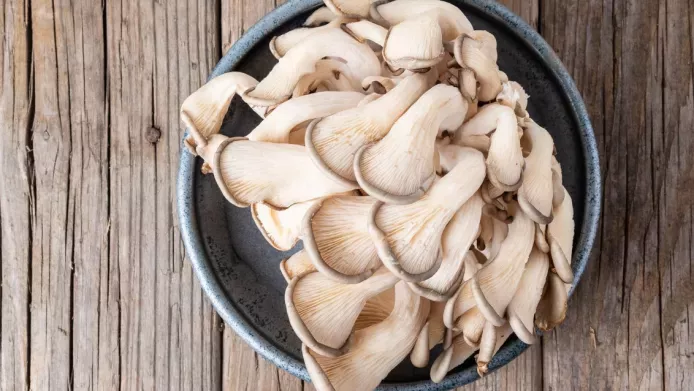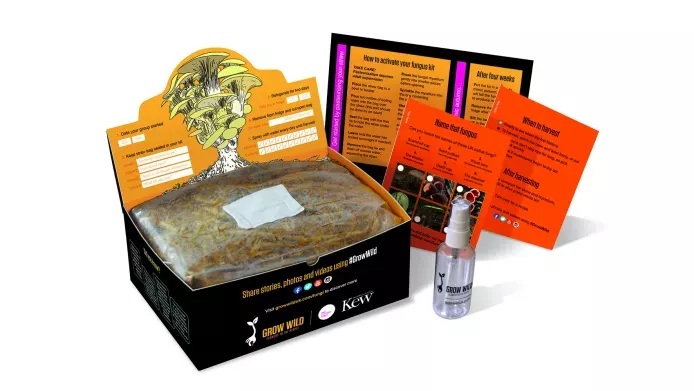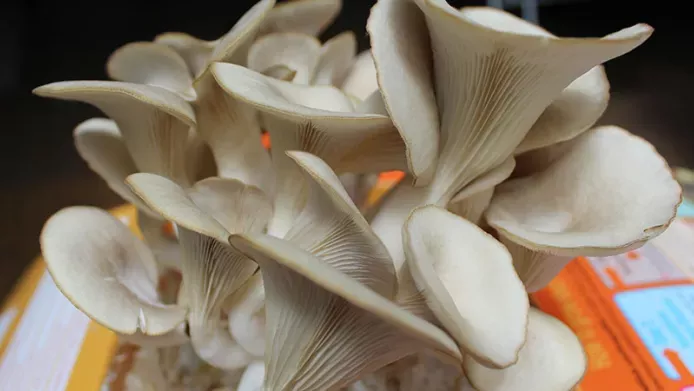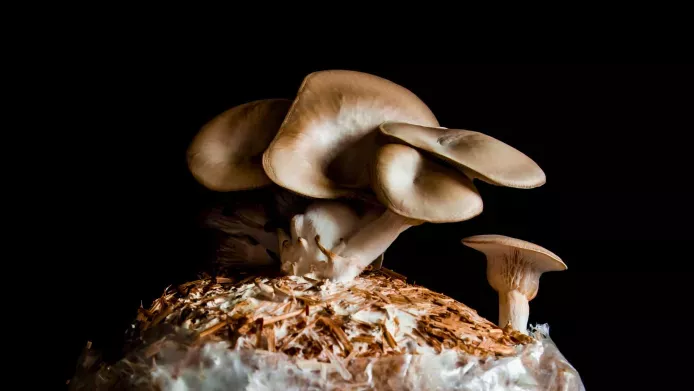Fungi in the wild have a life of their own.
It can be very difficult to identify mushrooms (or any fungus) without a good guidebook. Some species even require a microscope for accurate identification!
Whilst many species of fungi are edible, but many are toxic, and sometimes the two can look very similar. For this reason, we strongly recommend not consuming mushrooms you find in the wild unless you're an experienced, trained expert and are certain of the identification and edibility.
Luckily, for those of us who aren't seasoned mycologists (mushroom experts), there is another way to get up close with the fungi family.
Cultivating fungi
If you’re interested in growing mushrooms yourself rather than buying them from the supermarket, you could try cultivation.
Cultivating fungi means creating a protected environment where you can control which fungi grow and produce mushrooms, to reduce the risk of unfamiliar or unsafe fungi growing instead.
By cultivating fungi, you can produce an ongoing crop of mushrooms to eat over the long term. If you don’t want to grow them simply for food, cultivation is also a great way of encouraging fungi that you find particularly beautiful or interesting to grow.

You will need:
- A place for the fungus to grow
- A substrate – the surface or base on which the fungal mycelium feed and grow – it’s very important this substrate is treated correctly by pasteurisation or sterilisation.
- Fungal spawn - the mycelium for whichever strain of fungi you would like to grow.
When choosing a place for your fungus to grow, look around your own home or garden for inspiration. One of the most popular places to grow fungi is on logs, known as ‘mushroom logs’. Straw, fresh used coffee grounds and compost are also popular substrates for fungus growing – with the added benefit of recycling products that might otherwise go to waste!
Read more about how to grow fungi in different ways.

There are a growing number of organisations that supply spawn for growing fungi at home. Most provide useful instructions and advice on the best way to grow their fungi, but it’s important to research each supplier carefully to make sure they are supplying UK native species. As with growing plants, there is a risk that non-native species will compete with our native population, so we recommend cultivating UK native fungi responsibly.
Protected species
A ‘protected species’ is a species protected by law due to it being rare or endangered. If you do want to undertake any activity that might affect a protected species, you would need a licence to do so, or risk breaking the law.
We don’t recommend growing Lion’s Mane (Hericium erinaceus) as it is a protected species in the UK.
When is the best time to cultivate fungi?
Unlike sowing seeds or planting trees, there isn’t an optimum time of year to start cultivating fungi – the great thing is that if the conditions are correct, you should see results!
Temperature, humidity and the substrate you’re using will all affect your success, so follow the instructions provided by your supplier and keep an eye on how your fungus is doing.
"Temperature, humidity and the substrate you’re using will all affect your success."
How to harvest your mushrooms
Once your fungus has started to fruit and produce mushrooms, keep it hydrated and things should move very quickly!
Using oyster mushrooms as an example, these are some signs to look out for to know the mushrooms are ready to be harvested:
Flattening at the top of the mushrooms

Darkening at the edges of the caps and gills (avoid the edges getting too dark!)

When the mushrooms are ready, either cut them with scissors at the base or pinch the base and twist firmly to pick them. Mushrooms that have hardened and dried out are past their best!
Is there a quicker option for growing mushrooms?
If you’re more interested in producing a one-off crop of mushrooms, rather than nurturing a fungus that could produce mushrooms over several years, there are different types of mushroom-growing kit available.
These kits have the fungal mycelium already developed and in a state where creating a warm, wet environment will encourage mushrooms to fruit.
Please note that you’ll need to dispose of the used substrate once you have harvested your mushrooms grown from a kit. Always follow the instructions!
Any questions?
We’re unable to provide individual advice since each fungus-growing project is unique and there are so many variables that can have an impact on results. However, you can join our Facebook group for fungus growers where you'll find like-minded people to share experiences and ideas.